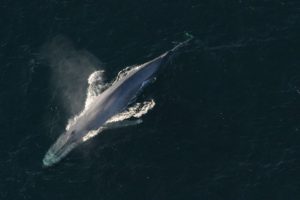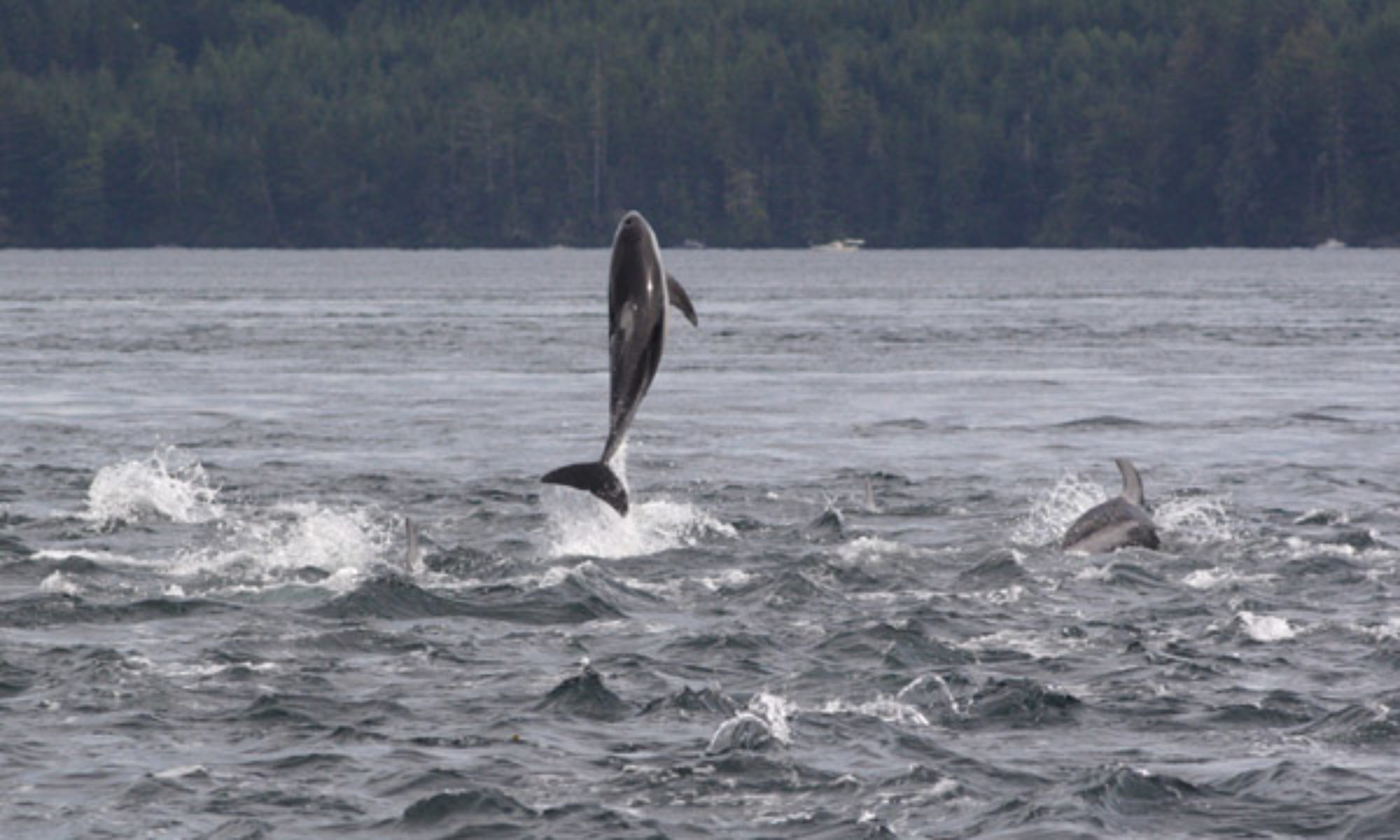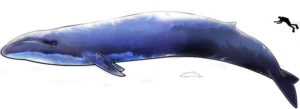Blue Whale
The Blue whale is a baleen whale in the Rorqual group. It is the largest animal that has ever lived on the planet. They are bigger than the dinosaurs that previously roamed the earth. Females are generally larger than males and can be up to 30 meters (100 ft.) in length. Their communication calls are the loudest of any creature on the planet and can be heard underwater from hundreds of kilometres away.
Despite their massive size, Blue whales eat some of the smallest marine life that is found in the ocean, tiny shrimp-like krill, filtering the food through their baleen plates. A single gulp takes in about 60 tons of water, almost enough to fill a school bus. Their spouts from breathing – “Thar’ she blows!” – can reach up to 9 meters (30 ft.) high. Blue whales can move fairly quickly, cruising from 8 to 22.5 km/h (5-14 mph), with quick bursts over 48 km/h (30 mph). They sleep while swimming. They usually travel alone, but sometimes can be found in small groups. Marine researchers can often identify individuals by the combination of their color, which ranges from bluish gray to turquoise, and their unique pattern of blotches. Their life span is estimated to be 80 to 110 years.
Blue whales can be found in all oceans but their population was drastically depleted by the whaling industry. The good news is that they appear to be slowly recovering, but they are nowhere near pre-whaling levels. The International Union for Conservation of Nature (IUCN) still lists them as an endangered species.
Good spots for Blue whale-watching in America are central California in the U.S., the Baja California Peninsula in Mexico, and the St. Lawrence River estuary in Canada. They appear to follow a seasonal migration pattern. One breeding ground is thought to be off the coast of Costa Rica, but quite a few miles out into the ocean.
Blue Whale – Balaenoptera musculus specifics:
Length:
25 to 30 meters (82 to 100 ft.)
Weight:
Up to 180000 kg
Colour:
Blue/gray with blotches
Features:
Elongated body with the head about one-fourth the length of the body
Prominent ridge in front of the blowholes, which acts as a splash guard
Tiny dorsal fin far back on their body, appears after exhalation has ended
Long and pointed flippers
Click on Cetacean Species in list below:


